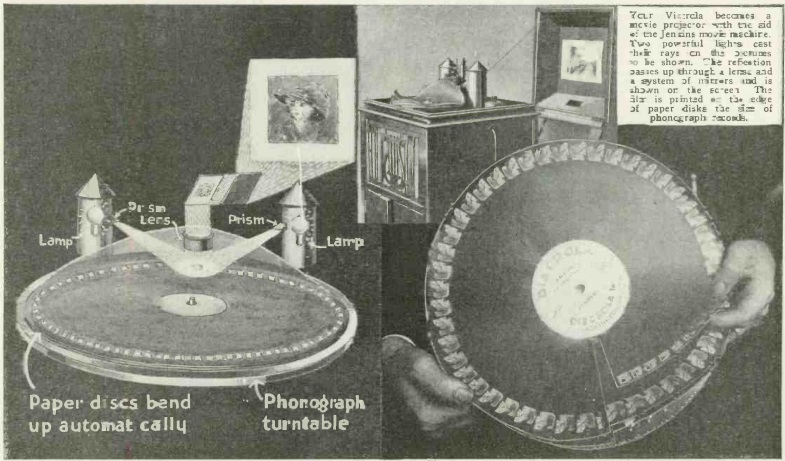 This illustration from the November 1923 issue of Science and Invention fits squarely into the category of very interesting things that never caught on for want of a practical application.
This illustration from the November 1923 issue of Science and Invention fits squarely into the category of very interesting things that never caught on for want of a practical application.
It is a system for showing motion pictures from your phonograph. The phonograph is busy spinning at 78 RPM, and this system allows you to use that phenomenon to project movies. The frames of your movie are printed on the edge of a paper disk which is placed on the platter, just like a phonograph record. Two bright lights shine on the image, and the opaque image is projected through a prism onto the screen.
A single disk will give you a movie of about 1/78 of a minute long. To provide for longer movies, the disk bends up automatically as it passes under the prism, which allows the layer below to be shown.
The magazine refers to it only as the “Jenkins movie machine.” That is probably a reference to Charles Francis Jenkins (1867-1934), a pioneer of early cinema. He went on to television, as the principal of W3XK, the first television station in the United States, which began broadcasts to the general public in 1928.
